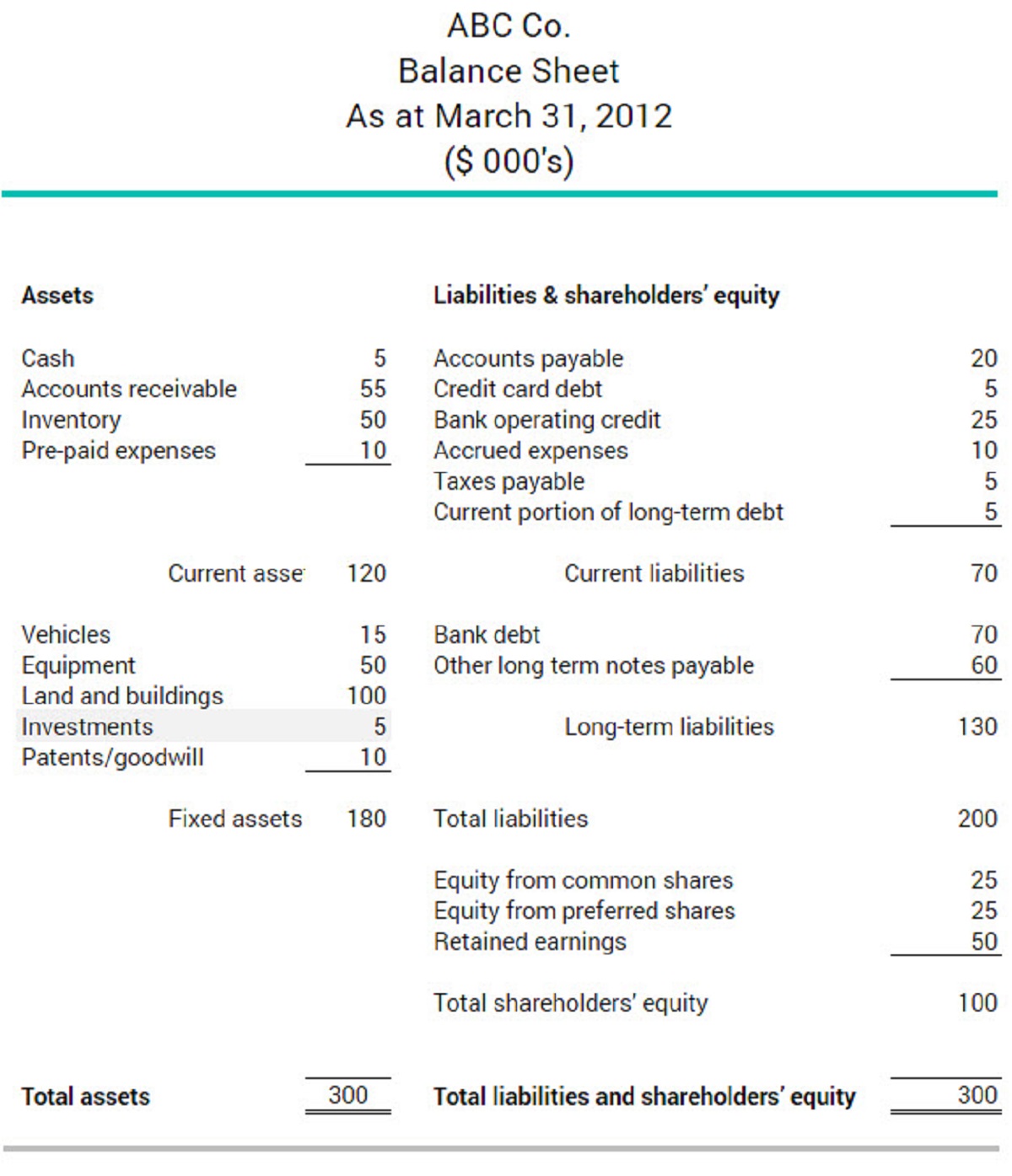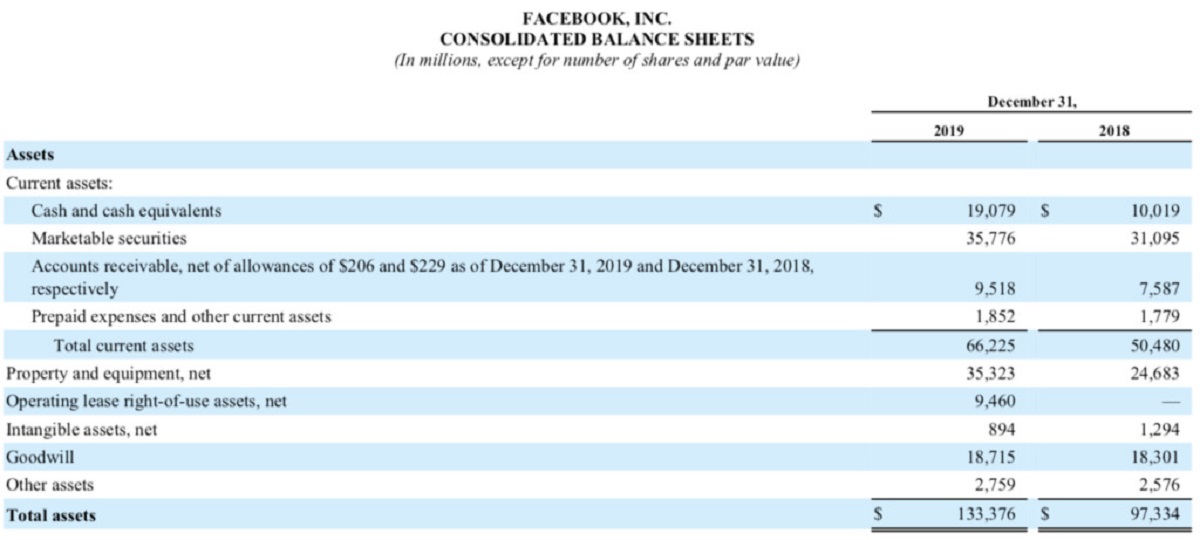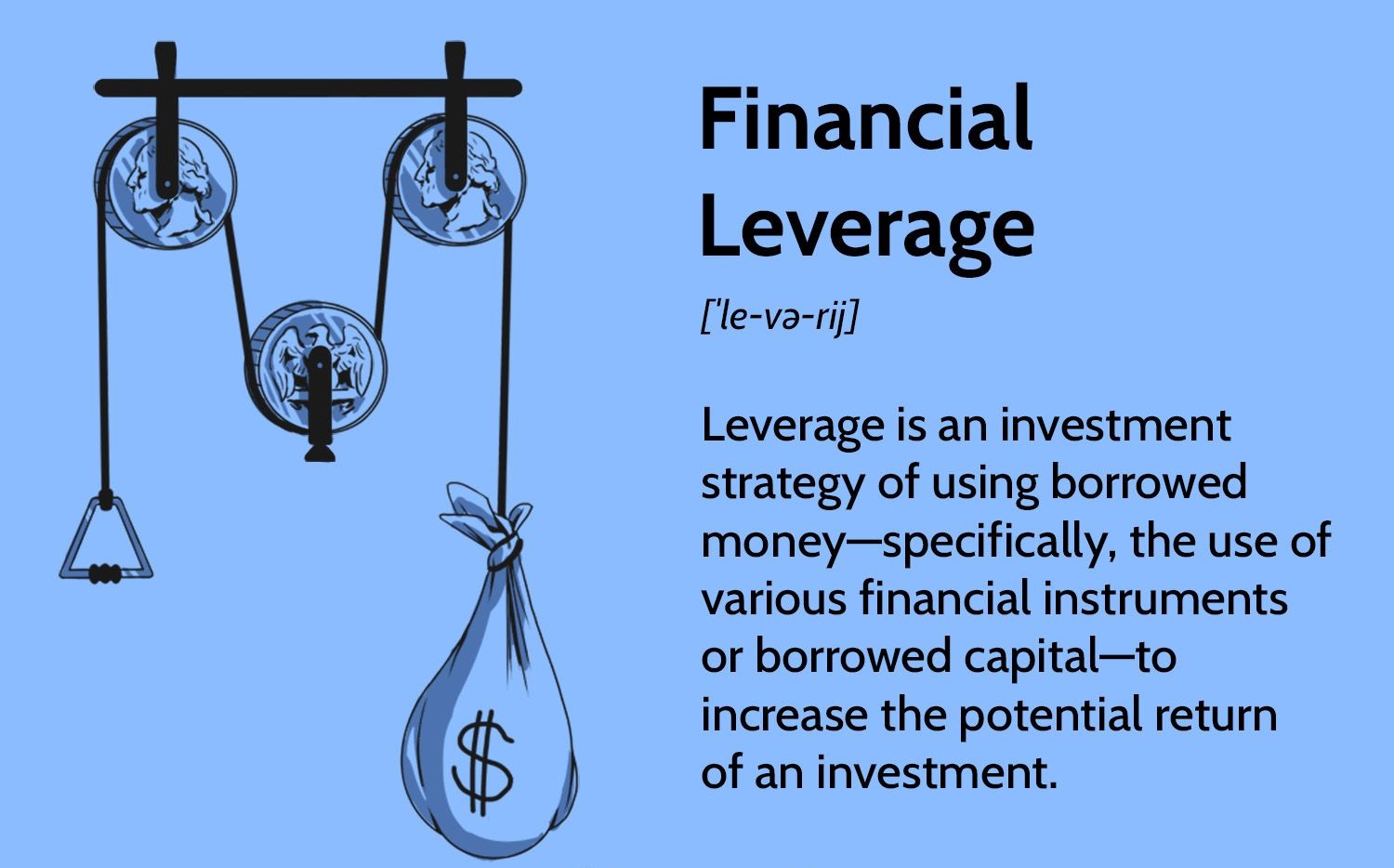Introduction
Welcome to the world of short-term investments and their place on the balance sheet. When analyzing a company’s financial position, the balance sheet provides crucial insights into its assets, liabilities, and equity. Among the various asset categories, short-term investments play a significant role in helping organizations manage their surplus funds and generate additional income.
Short-term investments refer to financial instruments that are acquired with the intention of holding them for a relatively short period, typically less than a year. These investments are readily convertible into cash and are considered highly liquid assets. They serve as an alternative to keeping excess funds in low-interest-bearing bank accounts, offering the potential for higher returns.
As a crucial component of a company’s financial portfolio, short-term investments are included as part of the balance sheet. This financial statement provides a snapshot of a company’s financial health and helps stakeholders understand its liquidity and solvency. By analyzing the balance sheet, investors, lenders, and other interested parties can assess the financial strength of a company and make informed decisions.
The inclusion of short-term investments on the balance sheet reflects a company’s strategy to optimize its financial performance. These investments demonstrate that the organization is actively managing its surplus cash and exploring avenues to generate returns. By investing in short-term securities, companies can earn interest income, dividends, or capital gains, which can significantly impact their overall profitability.
Short-term investments also serve as a buffer against unforeseen expenses or economic downturns. These investments allow companies to maintain a certain level of liquidity, ensuring they have sufficient funds to meet short-term obligations and operational needs.
In the following sections, we will delve deeper into the definition and types of short-term investments, their importance on the balance sheet, how they are reported, and the factors to consider when investing in them. By gaining a comprehensive understanding of short-term investments, you will be equipped to make informed financial decisions and evaluate a company’s financial position.
Definition and Types of Short-Term Investments
Short-term investments are financial instruments that are acquired with the intention of holding them for a relatively short period, typically less than a year. These investments are characterized by their high liquidity, as they can be easily converted into cash without a significant loss of value.
There are various types of short-term investments that companies can consider, depending on their financial goals and risk appetite. Let’s explore some common types:
- Treasury bills (T-bills): These are short-term debt obligations issued by the government to raise funds. T-bills are considered low-risk investments as they are backed by the full faith and credit of the government. They have a maturity period ranging from a few days to one year and offer fixed interest rates.
- Commercial paper: Commercial paper is a type of short-term debt issued by corporations to meet their immediate financing needs. These are unsecured loans with a maturity period of up to 270 days. Commercial paper is usually purchased by institutional investors and offers higher yields compared to other money market instruments.
- Certificates of deposit (CDs): CDs are time deposits offered by banks and financial institutions. They have fixed maturity periods, typically ranging from a few months to a few years. CDs offer a higher interest rate than regular savings accounts, making them attractive for short-term investments.
- Money market funds: Money market funds invest in highly liquid, low-risk securities such as Treasury bills, commercial paper, and certificates of deposit. These funds aim to maintain a stable net asset value of $1 per share and provide investors with easy access to their funds.
- Short-term bonds: Companies and governments issue short-term bonds with a maturity period of one to five years. These bonds pay fixed interest and are considered relatively low-risk investments. They can be bought and sold in the secondary market.
- Bank savings accounts: Traditional savings accounts offered by banks provide a safe and easily accessible means of investing surplus funds. While the interest rates may be lower compared to other short-term investment options, these accounts provide a high level of liquidity and security.
It’s important to note that the choice of short-term investments depends on several factors, including the company’s risk tolerance, cash flow requirements, and market conditions. By diversifying their short-term investment portfolio, companies can minimize risks and maximize returns.
Importance of Short-Term Investments on the Balance Sheet
Short-term investments play a crucial role on the balance sheet of a company. They contribute to the overall financial health and stability of an organization by providing several key benefits. Let’s explore the importance of short-term investments on the balance sheet:
- Liquidity Management: Short-term investments serve as a tool for effective liquidity management. By investing surplus funds in highly liquid assets, companies can maintain a balance between cash availability and maximizing returns. These investments provide a readily accessible source of funds that can be used to meet short-term financial obligations and unforeseen expenses.
- Income Generation: Short-term investments offer companies the opportunity to generate additional income. By investing in instruments such as Treasury bills, commercial paper, or money market funds, organizations can earn interest income or dividends. These interest payments can significantly contribute to a company’s overall profitability.
- Diversification: Including short-term investments in the balance sheet allows for diversification of a company’s investment portfolio. By spreading assets across different types of short-term investments, companies can minimize risk and reduce exposure to fluctuations in any single investment. Diversification helps to protect a company from potential losses and maintain stability in its financial position.
- Preservation of Capital: Short-term investments provide a relatively stable place for companies to preserve their capital. While they may not offer high returns like long-term investments, they are typically considered lower risk. This aspect is critical for companies that prioritize the preservation of their capital, ensuring that their surplus funds are not subject to significant fluctuations in value.
- Increased Financial Flexibility: Short-term investments on the balance sheet provide companies with increased financial flexibility. By holding these investments, organizations can easily convert them into cash whenever needed. This flexibility is essential in managing unexpected cash requirements, strategic investments, or taking advantage of attractive business opportunities.
Overall, short-term investments play a vital role in maintaining the financial strength of a company. They contribute to liquidity management, income generation, diversification of investments, preservation of capital, and increased financial flexibility. By carefully managing their short-term investment portfolio, companies can optimize their financial performance, mitigate risks, and ensure stability in their overall financial position.
Reporting Short-Term Investments on the Balance Sheet
When it comes to reporting short-term investments on the balance sheet, specific guidelines are followed to provide transparency and clarity to stakeholders. Here’s how short-term investments are typically reported:
Short-term investments are classified as current assets on the balance sheet. Current assets are those expected to be converted into cash or used up within the next operating cycle or one year, whichever is shorter. The classification as a current asset signifies that these investments are readily convertible into cash and can be used to meet short-term financial obligations.
Short-term investments are reported at their fair market value on the balance sheet. Fair market value represents the price at which an investment can be sold in the open market between willing buyers and sellers. This valuation approach ensures that the balance sheet reflects the most up-to-date and accurate value of the investments, providing stakeholders with a realistic picture of the company’s financial position.
The fair market value of short-term investments is typically determined based on quoted market prices or observable market data. For publicly traded securities, the quoted market price is readily available and serves as the basis for valuation. In cases where market prices are not readily available, fair values are estimated using pricing models or valuation techniques, taking into account factors such as interest rates, credit risk, and market conditions.
On the balance sheet, short-term investments are usually presented under a separate line item titled “Short-Term Investments” or “Investments – Current.” This allows for clear visibility and distinction between other current assets, such as cash, accounts receivable, and inventory. Transparency in reporting ensures that stakeholders can easily identify and analyze the company’s short-term investment portfolio.
In addition to the presentation on the balance sheet, companies also provide relevant disclosures in the footnotes to the financial statements. These disclosures include information on the types of short-term investments held, maturity dates, interest rates, and any restrictions or commitments associated with the investments. The footnotes provide additional context and details to stakeholders, enabling them to make more informed decisions.
It is important to note that the reporting of short-term investments may vary slightly based on accounting standards and regulations applicable in different jurisdictions. However, the underlying principles of transparency, fair valuation, and clear presentation remain consistent across reporting frameworks.
By accurately reporting short-term investments on the balance sheet, companies demonstrate their commitment to financial transparency and provide stakeholders with valuable information for assessing the company’s financial position and performance.
Examples of Short-Term Investments
Short-term investments encompass a wide range of financial instruments that allow companies to allocate surplus funds in a manner that promotes liquidity and maximizes returns. Let’s explore some common examples of short-term investments:
- Treasury Bills (T-bills): T-bills are one of the most popular short-term investments. These are debt securities issued by governments to raise funds. They have a maturity period ranging from a few days to one year and offer fixed interest rates. T-bills are considered low-risk investments since they are backed by the full faith and credit of the government.
- Commercial Paper: Commercial paper refers to short-term promissory notes issued by corporations to finance their immediate funding requirements. These unsecured loans have a maturity period of up to 270 days. Commercial paper is typically purchased by institutional investors, such as money market funds, and offers higher yields compared to other money market instruments.
- Money Market Funds: Money market funds invest in low-risk, short-term securities such as Treasury bills, commercial paper, and certificates of deposit. These funds aim to maintain a stable net asset value of $1 per share and provide investors with easy access to their funds. Money market funds are suitable for individuals and organizations looking for a safe and highly liquid short-term investment option.
- Certificates of Deposit (CDs): CDs are time deposits offered by banks and financial institutions. They have fixed maturity periods, typically ranging from a few months to a few years. CDs offer higher interest rates than regular savings accounts, making them attractive for short-term investments. However, early withdrawal may result in penalties.
- Short-Term Bonds: Short-term bonds are debt securities issued by companies and governments with a maturity period of one to five years. These bonds pay fixed interest and are considered relatively low-risk investments. Investors can buy and sell short-term bonds in the secondary market.
- Bank Savings Accounts: Traditional savings accounts offered by banks provide a safe and easily accessible option for short-term investments. While interest rates may be lower compared to other investment options, bank savings accounts offer a high level of liquidity and security. They are suitable for individuals and companies looking for low-risk investments and immediate access to funds.
It’s important to note that the selection of short-term investments depends on factors such as risk tolerance, desired liquidity, and financial goals. Companies may diversify their short-term investment portfolio by combining different types of short-term instruments to balance risk and optimize returns.
These examples highlight the variety of short-term investment options available to companies. By carefully assessing their financial needs and considering market conditions, companies can strategically allocate their surplus funds in short-term investments that align with their investment objectives.
Factors to Consider when Investing in Short-Term Investments
When investing in short-term investments, companies must carefully consider various factors to ensure they make sound financial decisions and achieve their investment objectives. Here are some essential factors to consider:
- Risk Appetite: Companies need to assess their risk tolerance before investing in short-term instruments. Different investments carry varying levels of risk, and it’s crucial to align the risk profile of the investments with the company’s risk appetite. Understanding the potential risks and rewards associated with each investment option is vital in making informed investment decisions.
- Liquidity Needs: Companies must determine their liquidity needs when investing in short-term instruments. Considerations include the availability of funds for immediate use, working capital requirements, and the ability to access cash quickly. Investing in highly liquid assets ensures that companies can easily convert their investments into cash when needed.
- Return on Investment: Evaluating the potential returns of short-term investments is important to maximize profitability. Different investment options offer varying interest rates, yields, or potential capital gains. Companies should assess the return on investment, taking into account factors such as maturity dates, interest rates, and market conditions.
- Investment Time Horizon: The investment time horizon is an important consideration when selecting short-term investments. Companies need to determine the period for which they can comfortably tie up their funds. Investments with shorter maturity periods provide more flexibility, while longer-term investments may offer higher returns but limit access to funds for a longer duration.
- Market Conditions and Interest Rates: Keeping an eye on market conditions and prevailing interest rates is crucial for short-term investing. Changes in interest rates can impact the returns on investments, especially for fixed-income securities like Treasury bills or bonds. Companies need to monitor market trends and adjust their investment strategy accordingly.
- Diversification: Diversifying short-term investments is essential to manage risk effectively. By investing in a mix of different short-term instruments, companies can spread their risk across various assets and sectors. Diversification helps avoid overexposure to a single investment and provides stability to the investment portfolio.
- Regulatory and Tax Considerations: It’s important to consider applicable regulations and tax implications when investing in short-term instruments. Different investments may have specific regulatory requirements, and their tax treatment can vary. Companies should consult with financial advisors or tax professionals to understand the impact of regulations and taxation on their investments.
By considering these factors, companies can make informed decisions when investing in short-term instruments. It is crucial to align investment choices with the company’s financial goals, risk tolerance, liquidity needs, and market conditions. Regular monitoring and evaluation of the investment portfolio is also necessary to ensure it remains in line with the company’s evolving needs and objectives.
Conclusion
Short-term investments provide companies with opportunities to manage surplus funds, generate income, and maintain liquidity. These investments play a vital role in optimizing a company’s financial position and contributing to its overall stability. By including short-term investments on the balance sheet, companies demonstrate their commitment to effective financial management and transparency.
Understanding the definition and types of short-term investments is essential in selecting investment options that align with the company’s risk tolerance, liquidity needs, and financial goals. The reporting of short-term investments on the balance sheet ensures clear visibility and accurate valuation, allowing stakeholders to assess the company’s financial strength.
Examples of short-term investments, such as Treasury bills, commercial paper, money market funds, certificates of deposit, short-term bonds, and bank savings accounts, highlight the variety of options available to companies. Careful consideration of factors such as risk appetite, liquidity needs, return on investment, investment time horizon, market conditions, and diversification is crucial in making sound investment decisions.
Companies must actively evaluate and monitor their short-term investment portfolio to ensure it remains aligned with their evolving financial needs and market conditions. Regular reviews of market trends, interest rates, and regulatory considerations allow companies to adjust their investment strategy accordingly and maximize returns.
In conclusion, short-term investments play a crucial role in optimizing a company’s financial position, generating income, managing liquidity, and ensuring financial stability. By carefully selecting and monitoring their short-term investments, companies can enhance their financial performance and achieve their investment objectives.

























